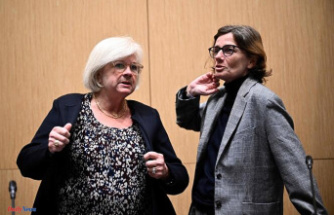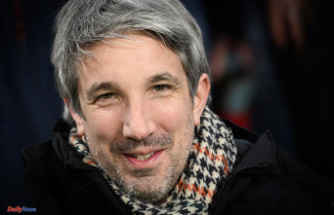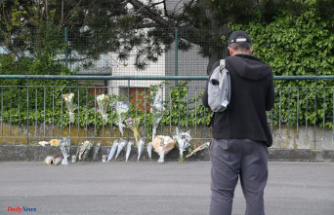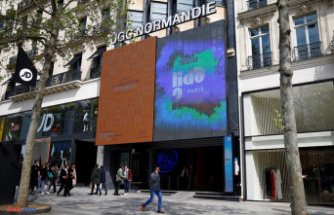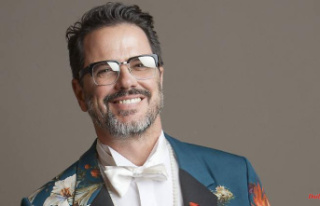Banks, RTL and EU institutions - as far as the Luxembourg cliché. Added to this were many years of the steel industry. Now Esch-sur-Alzette, the second largest city in the Grand Duchy, is making a comeback as European Capital of Culture, future incubator and art hotspot.
The football-sized ball falls with a crash into the space-filling steel spiral, rushing down loudly before the eyes of the visitors. Lands at an elevator that picks up the round piece and hauls it back up. There it rumbles along another route including a looping. What is reminiscent of an oversized drawing machine for lotteries or a marble run from childhood days is a work of art. "Distance" is the name of the installation. It meanders over three floors through the Konschthal in Esch-sur-Alzette.
The second largest city in Luxembourg is this year's European Capital of Culture, along with Kaunas in Lithuania and Novi Sad in Serbia. "Remix Culture" is the motto of Esch2022. Believe it or not, 2000 events should make the region vibrate - in the form of exhibitions, plays, concerts or new cycle paths. All this can be found in ten Luxembourg and eight French communes by the end of the year.
The focus, however, is Esch, which is only a stone's throw away from France. Up until the 1970s, the city increased the prosperity of the country as an industrial center. Iron ore was turned into steel here, and the T-beams produced here can still be found all over the world today. Half of Luxembourg's population immigrated, many from Portugal and Italy. The espresso that is offered - no matter where - is of course Italian. Three languages are the spoken minimum, multiculturalism is lived reality.
The former steel city is increasingly developing into a hotspot for art. When looking for the new side in Esch, art lovers first land in the Konschthal, which opened in October 2021. Contemporary art is exhibited on almost 2500 square meters in a former furniture store. Christian Mosar directs this art gallery. Raw structures, steel girders, rough concrete floors and the occasional corrugated iron wall that is still visible are not exactly the perfect white cube situation for exhibitions. "We will continue to develop the theme of change and transformation and react to it depending on the exhibition. For our Gregor Schneider show at the opening of the Konschthal, the visitors immersed themselves completely in the world of the artist. There was not much to see from the exhibition space itself. Now, with Jeppe Hein's marble run, everything is open."
The 54-year-old art historian comes from Esch and studied in Strasbourg because there was no art academy in Luxembourg at the time. "Actually, I thought that I would never return to Luxembourg," he tells ntv.de, laughing over an espresso. Why did he come back? "It started when I was studying, I worked freelance in museums and as an assistant for artists in Luxembourg. And suddenly I was here again."
What luck that he came back, because he is committed, well connected and competent. Mosar is also the artistic director of the Bridderhaus, which he can reach in ten minutes by bike from the Konschthal. The house is yet another exciting transformation, filling a discarded space with art and life. Artist studios and a restaurant will be housed in the former hospital. Eating out in Luxembourg is not unimportant, the density of starred restaurants is enormous. Art has already moved into the Bridderhaus, and two exhibitions have opened. In his paintings, the Swiss Sébastien Mettraux captures abstraction in Swiss bunkers. In addition, the public can trace Josef Stübben, an architect from the last century, and his urbanistic ideas for Esch.
Back in Konschthal, where "Metalworks. Designing
The Berlin artist Jeppe Hein is known worldwide for his art in public spaces, which likes to spark the urge to play with reflections, water and climbing elements. One of his amusingly deformed benches is also placed in front of the Konschthal. The white seating furniture, curved like an A, is part of the "Nothing is permanent" sculpture course. It goes straight through Esch. Alex Reding is responsible for this and he has drawn from the full. He skilfully mixes Luxembourg artists with international art greats. The Luxembourger is pure zest for action, has in-depth knowledge and lives next door to artists in his holiday resort. Like Christian Mosar, Reding is one of those people from Luxembourg who live 100 percent for art. In Luxembourg City he runs his gallery Nosbaum Reding. There is now a branch in Brussels. He also established the Luxembourg Art Week. With the small, fine art fair, he will be attracting visitors from Luxembourg and the neighboring countries to a tent full of contemporary art for the eighth time next November. But that is a story of its own.
In the Belval district, the resilience of Esch-sur-Alzette is unmistakable. The neighborhood comes across as a giant incubator. Here the city has changed from a hard-working-class district with dilapidated buildings to a modern city of knowledge. Finally there is a real university in Luxembourg and it is hungry for talent. Belval itself is an ambitious renewal project: on 120 hectares and almost 500 meters from the French border, scientific research and teaching are mixed with urban living, art and culture. The result is a unique mix of remains of the steelworks, a blast furnace converted into a viewing platform and ultra-modern buildings in which people work and live.
The Möllerei, which once stored iron ore and coke, which was melted into steel in the blast furnaces next door, is now a source of digital art. The exhibition "Earthbound - in dialogue with nature" was created in cooperation with the renowned Basel House of Electronic Arts, HEK for short. In their augmented and virtual reality works, videos, installations and AI works, artists here deal with the question of how "we can use technologies to better understand our environment," explains Françoise Poos, the artistic director the cultural capital.
Right next to discarded conveyor belts, "the urgency that we have to act is underlined in the post-industrial place. Media art is not always catchy, but art is shown to touch in the Möllerei, emotions produce the proximity to the environment," Poos continues. Here's how it works: The audience can watch the forest breathe or feel what vibrations feel like during an earthquake. Goose bumps in the seventh smallest country in Europe, which has arrived in the 21st century. Not just thanks to revolutionary media art, but because people like Christian Mosar are committed to getting the ball rolling.
Konschthal Esch, 29-33 Boulevard Prince Henri, 4230 Esch-sur-Alzette, "Metalworks" and "Distance" until September 4Sculpture Parcours "Nothing is Permanent" until November 11"Earthbound" until August 14 in the Möllerei, then in Basel at HEKAll information about the program of the European Capital of Culture Esch 2022 can be found here.



